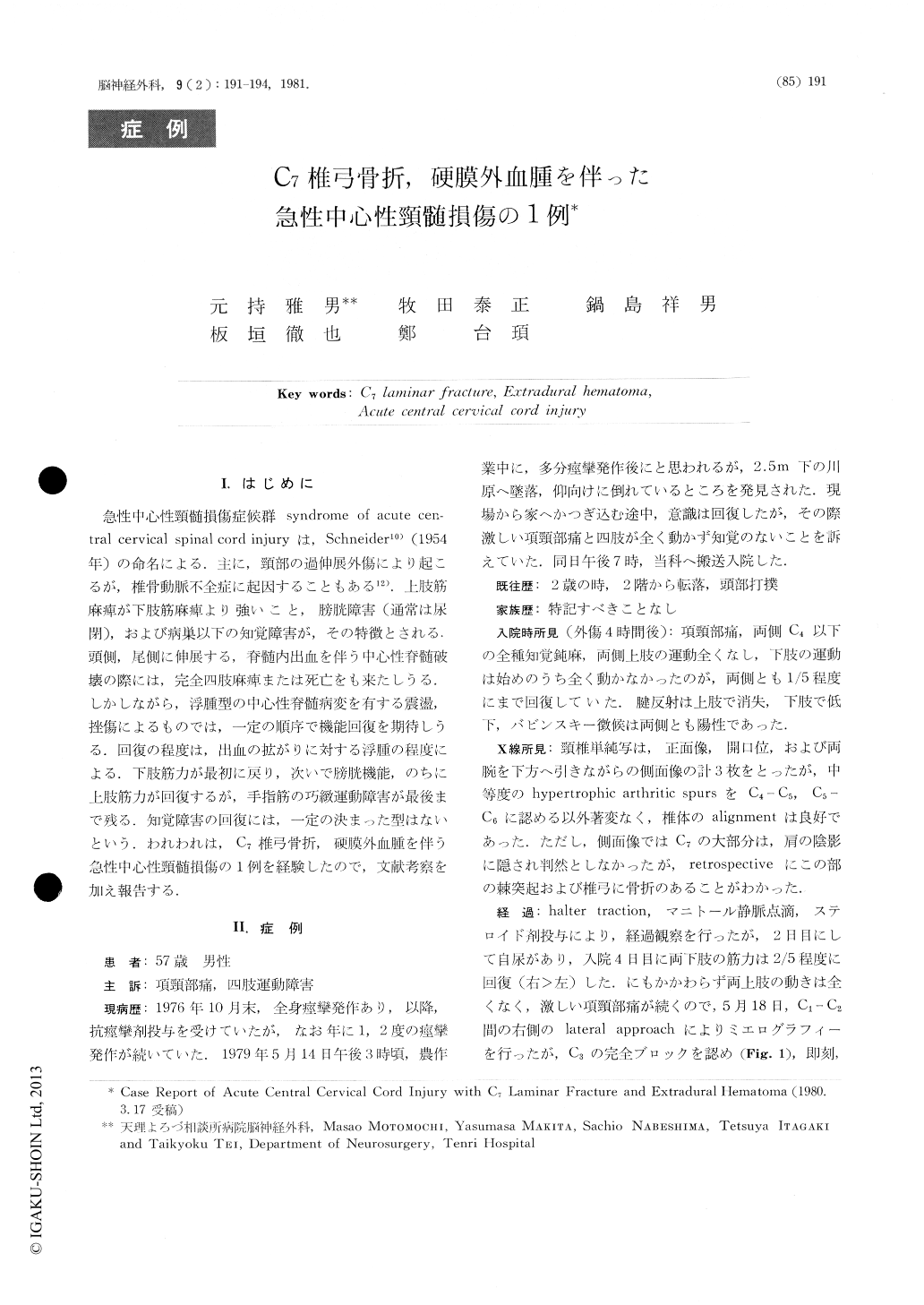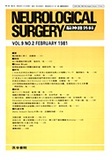Japanese
English
- 有料閲覧
- Abstract 文献概要
- 1ページ目 Look Inside
I.はじめに
急性中心性頸髄損傷症候群syndrome of acute central cervical spinal cord injuryは,Schneider10)(1954年)の命名による.主に,頸部の過伸展外傷により起こるが,椎骨動脈不全症に起因することもある12).上肢筋麻痺が下肢筋麻痺より強いこと,膀胱障害(通常は尿閉),および病巣以下の知覚障害が,その特徴とされる.頭側,尾側に伸展する,脊髄内出血を伴う中心性脊髄破壊の際には,完全四肢麻痺または死亡をも来たしうる.しかしながら,浮腫型の中心性脊髄病変を有する震盪,挫傷によるものでは,一定の順序で機能回復を期待しうる.回復の程度は,出血の拡がりに対する浮腫の程度による.下肢筋力が最初に戻り,次いで膀胱機能,のちに上肢筋力が回復するが,手指筋の巧緻運動障害が最後まで残る.知覚障害の回復には,一定の決まった型はないという.われわれは,C7椎弓骨折,硬膜外血腫を伴う急性中心性頸髄損傷の1例を経験したので,文献考察を加え報告する.
A 57-year-old epileptic male with an acute central cervical cord injury was reported, who fell down from 2.5 meter height to a dry river bed presumably during a convulsive seizure. Upon physical examination at the time of admission, 4 hours post trauma, there were severe neck pain with limited neck motion, sensory level at C4 bilaterally, no motion at all in the upper extremities, and minimal motion in the lower extremities as well as apparent urinary retention. Plain cervical spine series showed moderate posterior osteophytes at C4-C5, and C5-C6, although the film of lateral view did not visualize a part of C7 well.

Copyright © 1981, Igaku-Shoin Ltd. All rights reserved.


